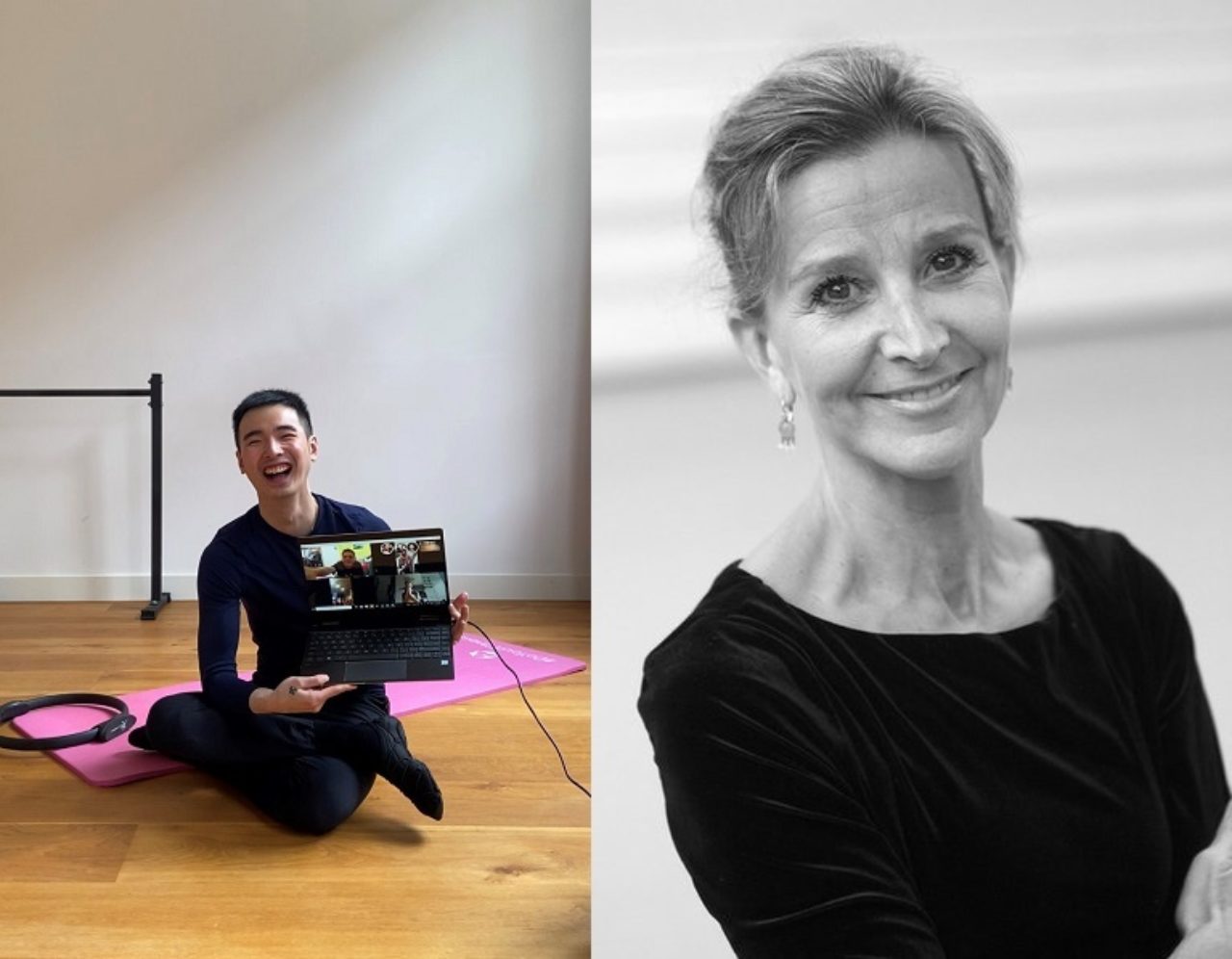When the Royal Conservatoire’s building closed in mid-March, the Dance department immediately adapted its teaching methods to ensure that classes could continue. To find out how things are going, we spoke online with Esther Protzman and Chao Shi a few weeks later, in early April. They teach classical ballet in groups 5 and 6 (students in the age group 15-16) – Esther for the girls and Chao for the boys.
A regular schedule and digital contact
The students are all in the secondary school of the School for Young Talent. Esther and Chao have maintained a regular schedule with their students: they start the day with the school curriculum, followed by the daily ballet lessons in the afternoon. Chao: ‘There are nine boys in my class. After the school work, we meet on Skype, usually from about two-thirty until four in the afternoon. The lesson always includes at least cardio exercises, pilates and a floor barre workout. We also do a regular barre routine, which they do with one hand on a chair or a table. And we are practising small jumps. It is great to see how disciplined the students are: once I was unable to give a lesson, but they contacted each other and did the class together.’
Esther is also in touch with her students every day. ‘We meet online at three o’clock every day. The students then start doing their exercises on their own or under my guidance. We do online live lessons, but I also make videos in advance, so that my students can do the lesson themselves. I regularly ask the girls to film themselves doing an exercise so that I can give them personal feedback. I consciously produce the videos in English, so that the students in the Bachelor programme, many of whom are not Dutch, can also join in. I am delighted to say that I have received lots of messages from former students around the world who also follow my online lessons.’
Esther and Chao
Esther has been teaching at the Royal Conservatoire for twenty years, before this she danced professionally for twenty years and was a soloist with the Dutch National Ballet. In addition to groups 5 and 6, she teaches many other classes in the Dance department, for example teaching pointe, pas de deux and repertoire in the Bachelor programme. Chao joined the Dance department three years ago. After training at the Shanghai Dance School and the National Ballet School of Canada, he was a dancer with the Dutch National Ballet for eleven years. He specialises in teaching boys.
Practising jumps in the garden
The students are used to working in the Conservatoire’s large ballet studios, but now they have to follow the lessons in the more cramped space of the living room or bedroom at home. Chao: ‘I try to design exercises that require as little space as possible, but which also have a real impact. It is easy to perform three pirouettes in a ballet studio, but it is far more difficult at home. So now, for example, I ask the students to keep their balance for as long as possible instead. This exercise provides a basis that we can build on later when we can return to the studio. On the other hand, it is very important for dancers to retain their feel for jumps and although not every home or surface lends itself to jumps, they can be practised outside in the garden.’ Chao stresses how important it is for the teacher to clearly demonstrate the movements, particularly with online lessons. ‘I try to show the students how a particular movement should be made, very clearly and in slow motion. But also, what they should not do. There are many videos on internet that only show a perfect rendition of a move, but it can be dangerous for students to follow them without also being warned of the pitfalls they need to avoid.’
Esther’s lessons also focus on reinforcing existing skills. ‘I feel it is important now to reinforce what the students already know than to cover new ground. By strengthening the basics now, we will be able to make rapid progress when we return to the studios. In addition to the classes with the teachers, the Dance students have all been assigned a programme of their own by the school’s physiotherapist. The programme is based on a cardio workout and stretching and strength exercises, three aspects that the students must work on constantly.’
Focus on feelings and creativity
This is also a period with enormous opportunities. Esther tells that it is not just about the physical aspect. ‘It is not just about the exercises, I want to continue to highlight the artistic and creative aspect of ballet. I give playful assignments, which the students enjoy and learn from. And I myself get to know the students even better this way. In this period, while we work remotely and digitally, we can also make it very personal.’
Chao explains that now that the students are less able to concentrate on movement and dancing together in the same space, it is a chance for them to focus more on feelings. Chao: ‘This is a good time for the students to reflect on what they feel, both as a person and as a dancer. Dancers are ‘selfish’, but in a very good way: we have to love ourselves before we can express that love and convey it to the audience. The audience will only enjoy our dancing if we are enjoying it ourselves.’







